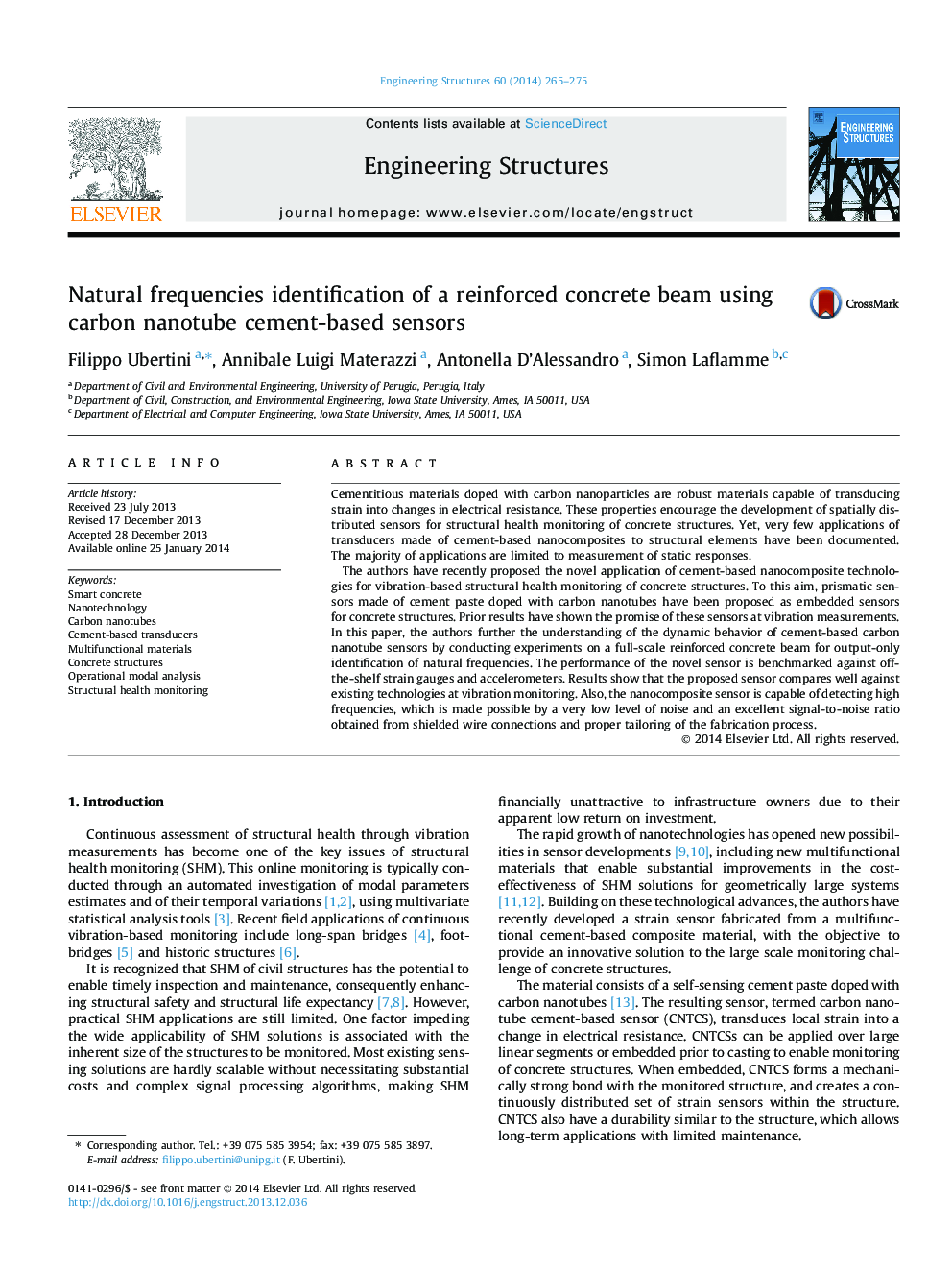| Article ID | Journal | Published Year | Pages | File Type |
|---|---|---|---|---|
| 266872 | Engineering Structures | 2014 | 11 Pages |
•We identify natural frequencies of a RC beam with cement-based nanocomposite sensors.•We compare performance of novel sensors against strain gauges and accelerometers.•The new sensors compare well against mature technologies for vibration monitoring.•Experiments covered a frequency range never investigated for cement-based sensors.•Though non-linear novel sensors are apt for output only frequency identification.
Cementitious materials doped with carbon nanoparticles are robust materials capable of transducing strain into changes in electrical resistance. These properties encourage the development of spatially distributed sensors for structural health monitoring of concrete structures. Yet, very few applications of transducers made of cement-based nanocomposites to structural elements have been documented. The majority of applications are limited to measurement of static responses.The authors have recently proposed the novel application of cement-based nanocomposite technologies for vibration-based structural health monitoring of concrete structures. To this aim, prismatic sensors made of cement paste doped with carbon nanotubes have been proposed as embedded sensors for concrete structures. Prior results have shown the promise of these sensors at vibration measurements. In this paper, the authors further the understanding of the dynamic behavior of cement-based carbon nanotube sensors by conducting experiments on a full-scale reinforced concrete beam for output-only identification of natural frequencies. The performance of the novel sensor is benchmarked against off-the-shelf strain gauges and accelerometers. Results show that the proposed sensor compares well against existing technologies at vibration monitoring. Also, the nanocomposite sensor is capable of detecting high frequencies, which is made possible by a very low level of noise and an excellent signal-to-noise ratio obtained from shielded wire connections and proper tailoring of the fabrication process.
Graphical abstractFigure optionsDownload full-size imageDownload as PowerPoint slide
